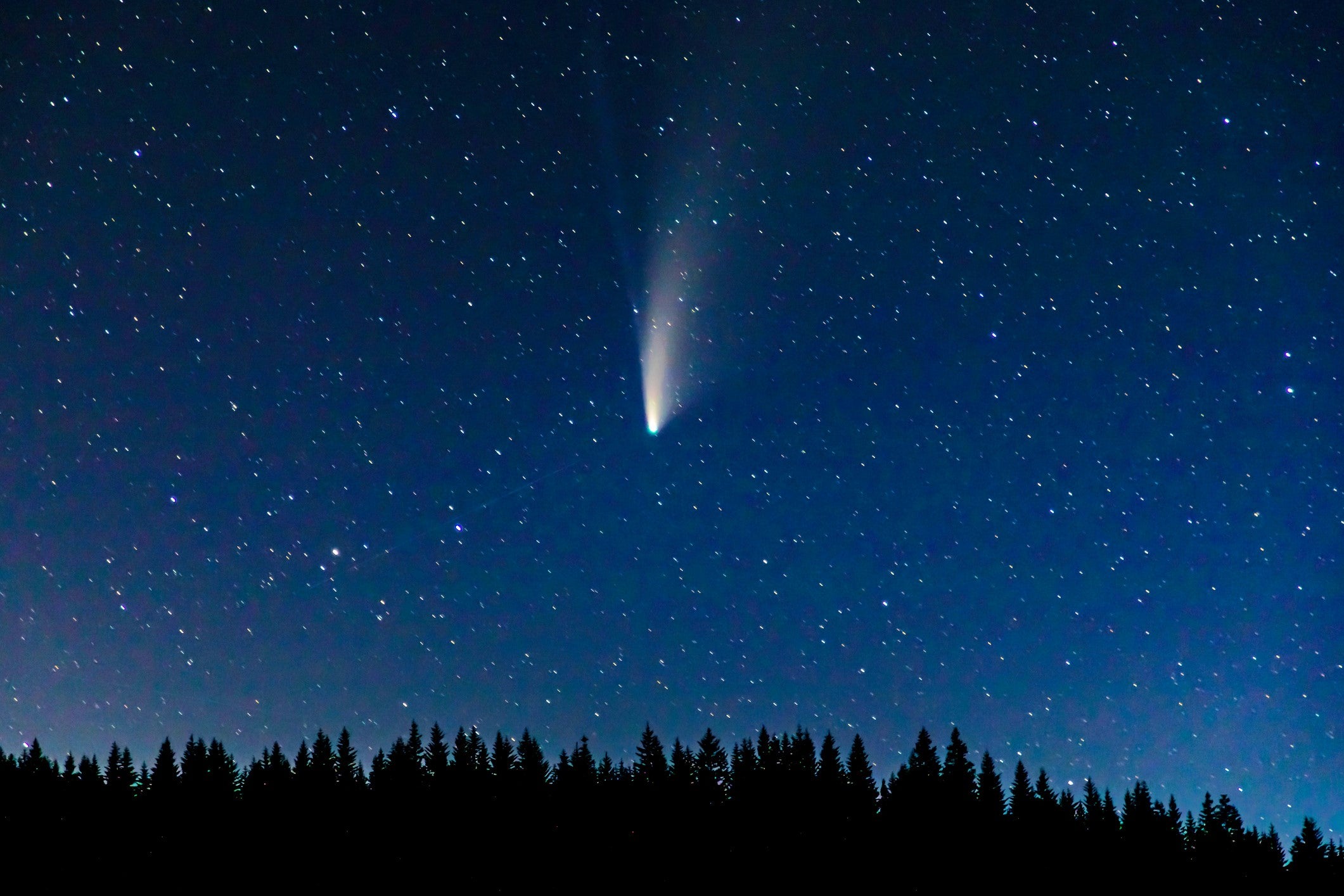How to see the ‘comet of the century’ this week
Comet A3 (Tsuchinshan-Atlas) last visited 80,000 years ago
A comet that visits the solar system every 80,000 years is set to pass Earth in the coming days, in what some astronomers are describing as the “comet of the century”.
First discovered in January last year, the Comet A3 (Tsuchinshan-Atlas) is finally becoming visible to the naked eye as its trajectory takes it closer to the Sun.
It is expected to be visible across two windows, weather and light pollution permitting. The first window between 27 September and 2 October will see the comet appear in the east just before sunrise, while during the second window from 12-30 October it will be visible in the west just after sunset.

It is unclear how bright the comet will become, with its closest approach to Earth taking place on 12-13 October. Nasa astronaut Matthew Dominick said the comet currently looks like a “fuzzy star” when viewing it from the International Space Station.
“This comet is going to make for some really cool images as it gets closer to the Sun,” he wrote on X, together with a timelapse of the space rock.
While some claim it will be the best chance to see a comet this century, others have downplayed its appearance.
“We’re all really excited about the prospect of the Comet A3 (Tsuchinshan-ATLAS) and how it might just be a nice bright object in the night sky,” Dr Robert Massey from the Royal Astronomical Society said in a video explaining the comet.
“People are asking whether this will be some kind of ‘comet of the century’. I don’t personally think that’s very likely. I think it’ll be a nice comet - and it looks as though it’s holding up for that – but it’s unlikely to be as easy to see as Neowise was in 2020 or Hale-Bopp in the late 1990s, which many of us still remember as being a really dazzling object.”
The Royal AStronomical Society will provide charts to help skygazers locate the comet, though Dr Massey recommends just scanning the sky to find it.
“I think my general advice for hunting something like a comet is use your eyes, but also use a pair of binoculars, sweep around – if it’s as bright as expected [then] hopefully it will be fairly obvious to pick up.”
A live stream of the comet is set to be broadcast by the Virtual Telescope Project on 9 October, which will aim to capture the event from its observatory in Manciano in Italy.
Join our commenting forum
Join thought-provoking conversations, follow other Independent readers and see their replies
Comments
Bookmark popover
Removed from bookmarks